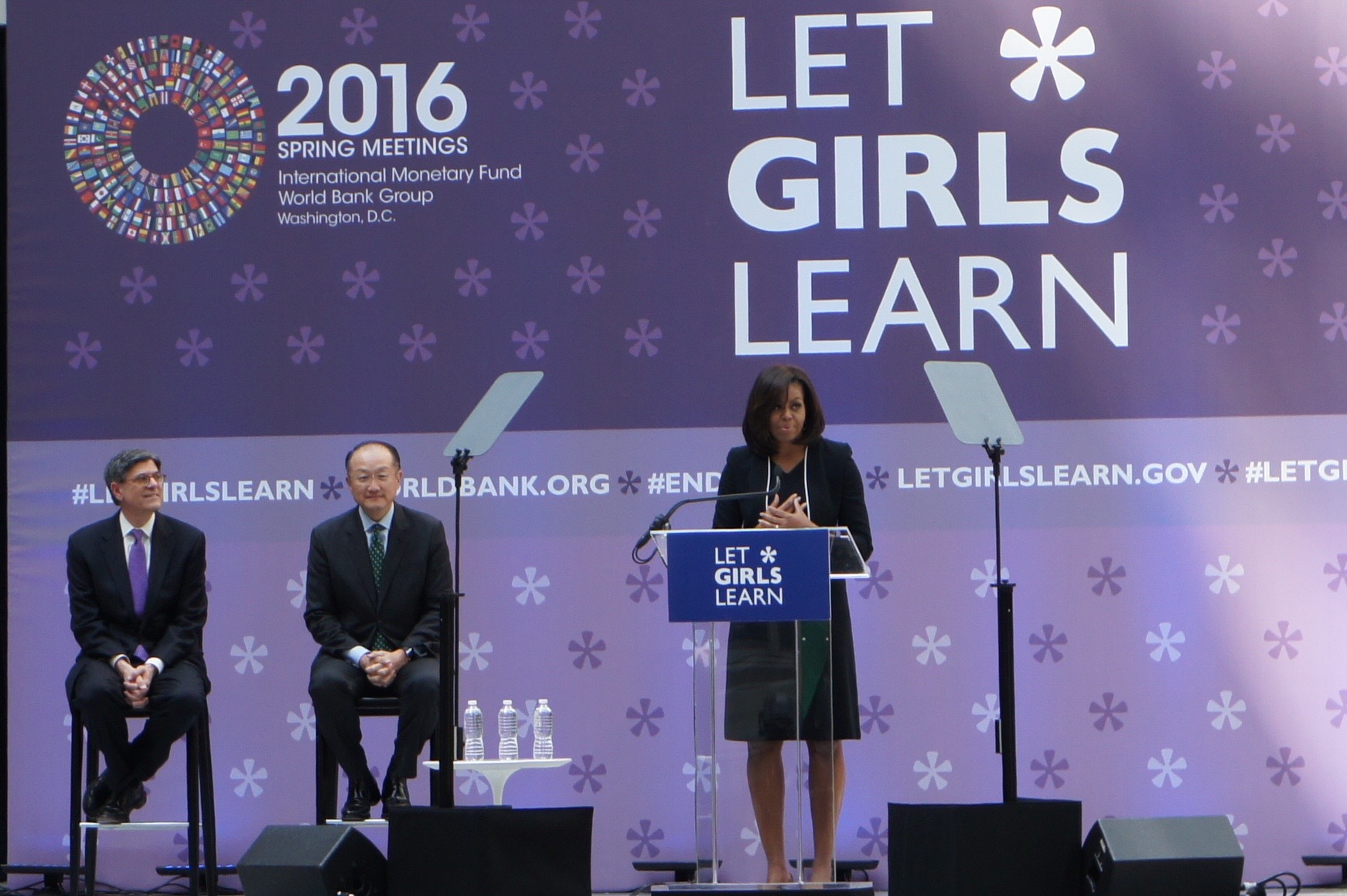WASHINGTON — Michelle Obama joined the World Bank on Wednesday in announcing the investment of at least $2.5 billion over the next five years to help adolescent girls go to school in developing countries.
“The evidence is very clear: When we invest in girls’ education, and we embrace women in our workforce, that doesn’t just benefit them, it benefits all of us,” Obama said at the meeting of the International Monetary Fund and World Bank.
The first lady spoke at the annual event for the first time as part of the “Let Girls Learn” campaign she launched last year together with President Barack Obama. Its mission is to address the range of issues that prevent adolescent girls from going to school.
An estimated 62 million girls worldwide are not attending school, and about half of them are adolescents. The World Bank initiative, which is separate, targets girls who are 12 to 17 years old. Much of the money will go to sub-Saharan Africa and South Asia, which have the largest number of out-of-school adolescent girls.
Bank officials said the program will have broad economic benefits worldwide.
“In Latin America, we found that when women’s participation in the labor market increased 15 percent in just one decade, the rate of poverty decreased by 30 percent,” said World Bank President Jim Yong Kim.
According to the United Nations Population Fund, more than 140 million girls will have become child brides during the period 2011 to 2020. World Bank analysis suggests that the economic benefits of ending child marriage are high, especially because it is a major factor that stops girls from attending school.
Kim also said that even a one percent increase in girls who have completed secondary school has a huge impact on per capita income growth.
The education gap between male and female students worldwide is improving, according to some representatives of developing countries who spoke at the forum.
Ghana was cited as one developing country where gender parity at the secondary school level is improving. Seth Terkper, Ghana’s minister of finance and economic planning, said some of the key challenges of reducing the gender gap in education are the high cost of education, teenage pregnancy, and obstacles to attendance.
In Rwanda, the number of the girls in secondary school is expected to double by 2020. Ambassador Mathilde Mukantabana said the government has placed a strong emphasis on teaching technical skills to adolescent girls. Technology camps have been set up with the help of the U.S. government to empower young women, she said.
In India, a $500 million project has helped raise the secondary school enrollment of young girls, and 4.3 million of them have been enrolled since 2012. The government’s goal is to achieve an enrollment rate of 90 percent by 2017.
“Getting all adolescent girls into school by 2030 will require new resources and stronger partnerships in both the public and private sector,” said Kim.
The first lady added: “Make no mistake about it, these girls are our girls. These girls are our responsibility.”


